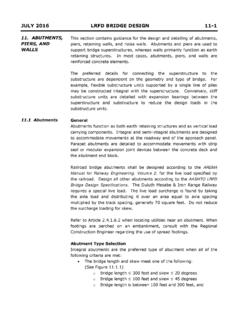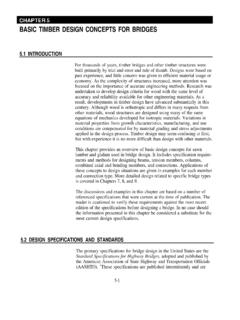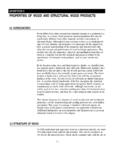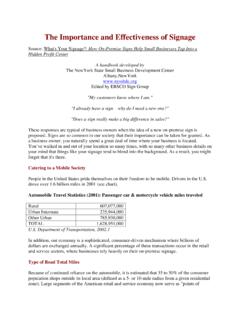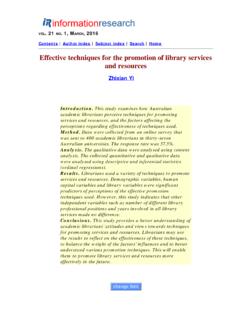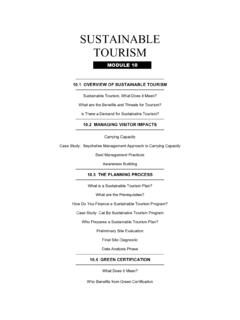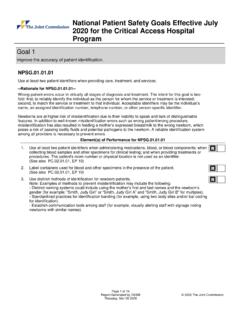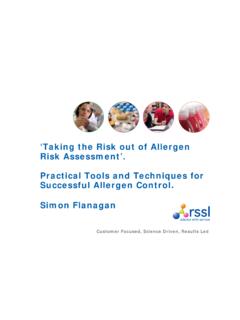Transcription of Effectiveness of Traffic Signs on Local Roads
1 January 2010 TRS 1002 Effectiveness of Traffic Signs on Local Roads Introduction The 2009 edition of the Manual on Uniform Traffic Control Devices includes requirements for the management and maintenance of all roadway Signs . Management of large numbers of Signs can pose administrative and financial challenges for Local road authorities. The Minnesota Department of Transportation is reviewing whether the removal of ineffective Traffic Signs may be part of an overall sign management strategy and has asked CH2M Hill to prepare a best practices guide for removing Traffic Signs . In support of this work, CTC & Associates was tasked by Mn/DOT with performing a literature search and synthesis of research demonstrating the Effectiveness or lack of Effectiveness of various types of Traffic Signs on Local Roads , including low-volume Roads .
2 Summary There does not appear to be significant credible research demonstrating the outright ineffectiveness of particular Traffic warning Signs . The research we identified provides support for opposing points of view: that Traffic warning Signs have a minimal or neutral effect on safety, or, alternatively, that warning Signs are effective at reducing crash rates and severity. National guidance recommends that Traffic warning Signs be employed based on engineering studies and engineering judgment, and suggests that the excessive use of Signs can reduce their Effectiveness . The MUTCD guidance on warning Signs begins with the direction that the use of warning Signs shall be based on an engineering study or on engineering judgment. It further indicates that the use of warning Signs should be kept to a minimum as the unnecessary use of warning Signs tends to breed disrespect for all Signs .
3 That directive is not followed by guidance or research indicating what types of Signs are actually ineffective. Traffic sign Effectiveness appears to be more a matter of perception and opinion than of fact based on evidence. For example, NCHRP Synthesis 186, Supplemental Advance Warning Devices (1993, page 1), found that the majority of the devices encountered in this project were not evaluated by formal Effectiveness studies, but are simply perceived to be effective by the responding agency. A study of the Effectiveness of static warning Signs by the Institute of Transportation Engineers ( Static Warning Signs of Occasional Hazards: Do They Work? ) came to a similar conclusion. In that study 18 percent of responding state transportation agencies thought the use of static warning Signs for occasional hazards was effective, but 93 percent indicated that no studies had been done to investigate the actual Effectiveness of the Signs .
4 On the other hand, Fred Ranck, FHWA safety and design engineer, indicated in an interview that warning Signs have proven safety benefits (see the National Research and Guidelines section on page 3). Prepared by CTC & Associates LLC 1We organize our findings into the following two sections: National Research and Guidelines State Research and Guidance The National Research and Guidelines section contains research from FHWA, NCHRP, TRB and the Institute of Transportation Engineers. The research includes studies that show particular Signs to have minimal impact on safety, and studies that point out that the Effectiveness of the Signs has simply not been vigorously tested. This section also includes an article from FHWA s Public Roads that points to the Effectiveness of increasing the number of warning Signs in Mendocino County, Calif. The State Research and Guidance section includes studies from Kansas, Iowa and Washington state.
5 The Iowa publication Guidelines for Removal of Traffic Control Devices in Rural Areas, addresses many of the issues involved with the removal of Traffic Signs . The paper is focused exclusively on stop and yield Signs and does not present research on the safety Effectiveness of other types of Signs . The other two studies cited in this section found that the use of particular types of warning Signs (such as deer crossing and ice warning) are minimally effective. Prepared by CTC & Associates LLC 2 National Research and Guidelines Interview with Fred Ranck, Safety Design Engineer, FHWA Resource Center, Matteson, Ill., (708) 283-3534. Mr. Ranck indicated in an interview that warning Signs have proven safety benefits. He pointed to the large volume of research data regarding the Effectiveness of Signs as a crash reduction strategy found at (Scroll to the sections titled Resources for Countermeasure Selection and Publications.)
6 The Publications section includes issue briefs on the Effectiveness of countermeasures including Signs on intersection crashes, pedestrian crashes and roadway departure crashes. These issue briefs contain tables listing the types of Signs , their Effectiveness and the research that exists to support those conclusions. Mr. Ranck also pointed to NCHRP Report 500, Guidance for Implementation of the AASHTO Strategic Highway Safety Plan, as a resource for information regarding the use of Traffic Signs to improve safety. This report consists of 19 volumes pertaining to specific types of highway crashes or contributing factors. Volume 7 is cited on page 4 of this report. In general, Mr. Ranck said that Signs can be very effective. He said warning Signs that use black lettering on a yellow diamond are the most effective and that the use of larger Signs and flashers also increases Effectiveness .
7 While there is research pointing to the Effectiveness of warning Signs in reducing accidents, there is a distinct lack of research on the Effectiveness of regulatory and guide Signs . According to Mr. Ranck, We don t really know that much about the credibility of regulatory or guide Signs . Manual on Uniform Traffic Control Devices, FHWA, 2009. The latest version of the MUTCD was adopted in December 2009. Section 5 of the new version is titled Traffic Control Devices for Low-Volume Roads . Section 5: Section , Application, includes this guidance: It is possible, in many cases, to provide essential information to road users on low-volume Roads with a limited number of Traffic control devices. The focus might be on devices that: A. Warn of conditions not normally encountered, B. Prohibit unsafe movements, or C. Provide minimal destination guidance.
8 The 2009 MUTCD also includes general guidance for the placement of Traffic warning Signs . Section 2: Section , Application of Warning Signs , includes this guidance: The use of warning Signs shall be based on an engineering study or on engineering judgment. The use of warning Signs should be kept to a minimum as the unnecessary use of warning Signs tends to breed disrespect for all Signs . In situations where the condition or activity is seasonal or temporary, the warning sign should be removed or covered when the condition or activity does not exist. Safety Evaluation of Advance Street Name Signs , FHWA, Frank Gross, Bhagwant Persaud, Andrea Piesse, Nancy Lefler, Kimberly Eccles, James Jenness, June 2009. This FHWA-funded study of 26 states evaluated low-cost safety strategies as part of its strategic highway safety effort. The goal was to assess several unproven safety strategies outlined in the NCHRP 500 series reports.
9 This report focuses on the Effectiveness of advance street name Signs on the number and severity of crashes. The report includes detailed descriptions of the objective, methodology and data collected in the study. Prepared by CTC & Associates LLC 3 The report concludes that advance street name Signs have a minimal effect on the total number of crashes at signalized intersections. Similarly, there were no significant changes in rear-end, older driver, or injury-related crashes. (page 37) Toolbox of Countermeasures and Their Potential Effectiveness for Intersection Crashes, FHWA Issue Brief 8, August 2008. This issue brief contains data on the Effectiveness of a variety of Traffic control measures to reduce crashes at intersections. Table 3, beginning on page 9, evaluates the use of Signs to reduce Traffic accidents. The data included in the table and the literature cited in support indicate engineering research support for the use of Traffic warning and regulatory Signs to reduce Traffic accidents and their severity.
10 Static Warning Signs of Occasional Hazards: Do They Work? Ahmed Al-Kaisy, Amanda Hardy, Charles P. Nemfakos, Institute of Transportation Engineers, ITE Journal, Vol. 78, No. 6, June 2008: 38. Abstract: This article discusses the Effectiveness of static warning Signs of nonpermanent hazards. The study included a literature search and a survey of state departments of transportation. From the abstract: The literature review revealed that there is a lack of distinction in the literature between warning Signs for permanent potential hazards (curves, winding Roads , etc.) versus those for occasional hazards. The authors noted that the studies did not look at the Effectiveness of the static warning Signs themselves, but used the Signs as a comparison to enhanced warning devices. The survey of transportation departments revealed that most agencies had not done any evaluations of the Effectiveness of [static warning Signs for occasional hazards], but that most perceived that SWSOH were only somewhat effective.
